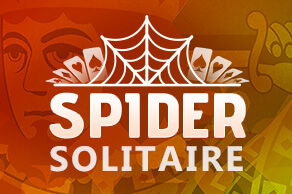
The real Jeremiah Heaton and Emily show off the flag that their family designed for the Kingdom of North Sudan. In his column, John Kelly imagines what a typical day must be like for the family now. (David Crigger/Associated Press)
“Man plants flag, claims African country to make his daughter a princess.”
“I wanted to show my kids I will literally go to the ends of the earth to make their wishes and dreams come true,” Jeremiah Heaton said.
The line stretched from the closed bedroom door, down the carpeted hallway, through the living room and out the front door of the Abingdon, Va., home. There were dozens of supplicants, all waiting for Her Highness, Princess Emily, wise and benevolent ruler of the Kingdom of North Sudan.
The supplicants were a varied lot: hopeful office seekers, diplomats, representatives from oil exploration companies, journalists, suitors. . . . Lots of suitors: boys ranging in age from 6 to 10. Most had been squeezed into suits, their cowlicks plastered to their foreheads. They tugged at neckties and squirmed next to their mothers.
One boy wore a suit of armor. “I am Prince Colton of Ashburn,” he kept repeating.
On the door was a sign — handwritten in glitter pen — that read “Princess Emily is out.”
At exactly 10 a.m., the door opened. Two 12-year-old girls emerged: Lady Madison and Lady Kaitlyn, two of Princess Emily’s ladies-in-waiting. The coterie of middle school-aged girls had been selected for their lip gloss skills, prowess with cootie catchers and ruthless, unwavering loyalty.
They pulled down the sign and announced in unison, “Her Highness will receive you now.”
First in line was a 40-ish woman. She entered the royal bedchamber and found Princess Emily seated upon a pink beanbag chair and wearing a pink tutu, ruby slippers, a candy necklace, a tiara and a crown.
“Emily,” the woman began.
“Princess Emily,” the 7-year-old corrected, pointing at her tiara-crown combo.
“Emily,” the woman repeated. “I’m on the board of the Feminist League Against Princesses. We’re a group of scholars and gender-rights activists who are working to counter male hegemony. We certainly appreciate your desire for power — there’s no reason women can’t be as powerful as men — but, really, Emily, you’ve set your sights too low. You’ve allowed yourself to be defined in relation to the patriarchy. Historically, being a princess has meant three things: looking pretty, acquiescing to male domination and being able to run in glass slippers. Aim higher, Emily. Aim to be a scientist or an engineer or a doctor. Or president! Wouldn’t you rather be Angela Merkel than Princess Jasmine?”
Princess Emily fixed the woman from FLAP with a steely stare. “Do presidents wear satin dresses with lace and jewels and crowns and tiaras?” she said. “Do presidents come with long, brushable hair? Do people tell fairy tales about presidents? Do they make movies and TV shows about presidents?”
“TV shows? Of course they do. Why, Geena Davis was . . .”
“Silence! Do they make movies with ballroom dancing and flying carpets and mistaken identities and evil stepmothers and talking teapots and sleeping potions and kisses?”
“Well,” stuttered the woman.
“I didn’t think so. To the dungeon!”
Lady Madison and Lady Kaitlyn hustled the woman to the basement and chained her to the water heater next to a box of camping equipment and scrapbooking supplies. A bored-looking boy in an ermine-trimmed hoodie played on his Game Boy with manacled hands.
“She said I reminded her too much of Prince Hans and not enough of Prince Charming,” he shrugged.
Upstairs, the royal audiences continued. A little girl nervously clutched a tiara. “Go on, Kailey, don’t be shy,” said her mother, pushing her toward Princess Emily.
“I’d like to be a princess, too,” the little girl said.
“I’m the Princess,” Her Royal Highness said. “The best I can do for you is marchioness.”
“Marcha-what?” The little girl looked at her mother.
“I don’t think that’s a very good one, is it?” the woman said.
“Silence! I’ve rescinded my offer. You can be Countess Kailey, but one more outburst and I’m bumping you down to baroness. See the royal bursar in the kitchen. Next!”
A man in a suit approached. “Princess Emily,” he said, bowing deeply, “I represent the Walt Disney Company. We would like to make a movie of your life, an animated feature about a typical American girl whose father literally goes to the ends of the Earth to make her dreams come true.
“It’s sort of ‘The Princess Diaries’ meets ‘Life Is Beautiful,’ but without the Nazis. Of course, we’d need the king’s permission.”
“The king?” Princess Emily said. “Who’s that?”
“Why, your father.”
Princess Emily, wise and benevolent ruler of the Kingdom of North Sudan, screamed at the top of her little lungs: “Daddy! Get in here!”
A bearded man stuck his head in the door. “Yes, Your Highness?”
“Are you king?”
“Well, sweetheart, technically, if you’re a princess, I guess that makes me a king.”
“I don’t like that. You’re not king. To the dungeon!”
As the ladies-in-waiting bundled him off, Emily’s father muttered, “How sharper than a serpent’s tooth it is to have a thankless child!”
“I will make your movie on two conditions,” Princess Emily said, adjusting her tiara-crown combination. “I want a dragon — no, three dragons — and from now on I will be addressed as Khaleesi Emily.”
“Works for me,” said the man from Disney.
Twitter: @johnkelly
For previous columns, visit washingtonpost.com/johnkelly.








